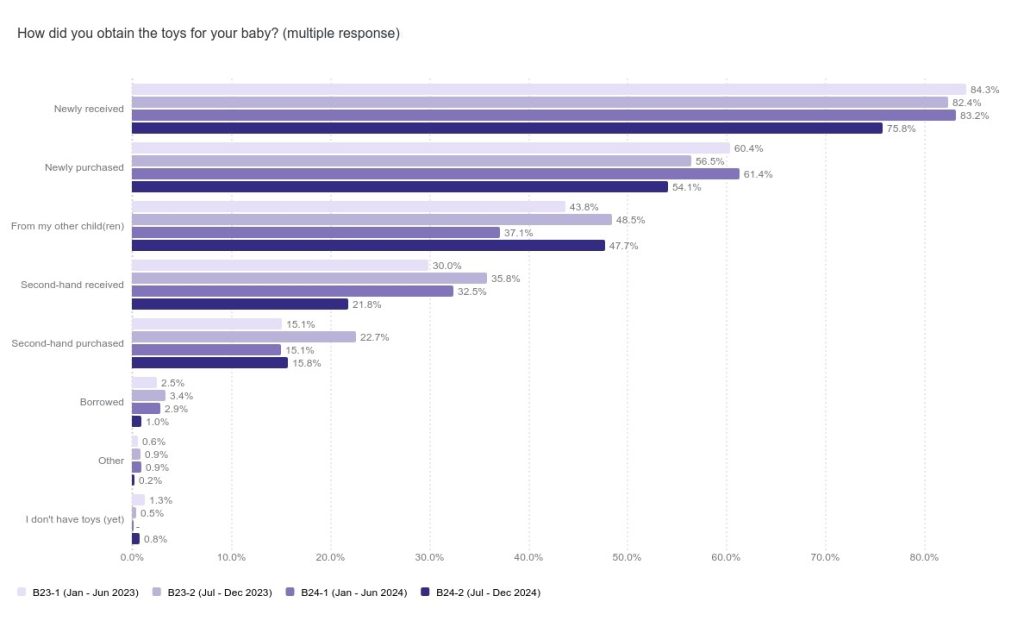News article
Significantly less money spent on toys
A panel of parents is asked about their purchases for their (expectant) baby through the WIJ Monitor every six months. Toys are one of them. We see that toys remain a popular (maternity) gift, and that parents spend their money very consciously.
Babies are increasingly playing with things from older siblings.
Parents receive the majority of baby toys as gifts. 75.9% were new gifts, 22% secondhand. Both percentages are lower than in previous studies. Two years ago, the percentage of new gifts was 84.3%.
54% of parents buy new toys themselves. Six months earlier, that figure was 61.3%. The percentage of secondhand purchases remains fairly stable at just over 15%. Borrowing toys is definitely not popular for babies. Only 1% are borrowed. However, it is striking that many more babies now play with things from older siblings. Compared to the previous six months, the percentage rose by a whopping 10% to 47.5%.
More frequent in-store visits
Most parents (52.5%) buy new toys in both brick-and-mortar stores and online stores. Although that percentage was still above 60% two years ago, more parents are now opting to buy toys in person: 32.1% compared to over 23% eighteen months ago. At the same time, the number of parents who buy exclusively online is also increasing: 16.3% compared to 9.7% two years ago.
Where do parents shop for new toys?
The top 5 stores parents visit most often to buy toys has remained relatively stable over the past two years. Kruidvat is in first place (61.8%), followed by Hema (39.1%), Prénatal (36.3%), Action (34.9%), and Intertoys (29.1%). Is this related to the varying presence of these chains in cities and towns? In previous studies, only Hema and Prénatal changed places twice.
Online, Bol.com remains undiminishedly popular (67.5%). Prénatal, Kruidvat, Hema, and Amazon follow with percentages ranging from 26.2% to 17.9%.
Established brands at the top
Babies themselves don’t yet have a preference for a specific toy brand. This reflects parents’ tastes. Little Dutch remains the most popular (64.4%), although the percentage of newly purchased toys from this brand did drop 6% compared to the previous six months. Sounds and lights also remain popular: Vtech takes second place with 40.7%. Following them are Miffy (36.3%), Hema (34.4%), and Fisher-Price (29.3%).
Striking spending figures
In addition to the reuse of toys from older children, the latest study also reveals the significantly lower amounts parents spend on toys. In the previous three studies, €154, €191, and €154 were spent on new toys, respectively. In the latest study, this was only €96!
Secondhand toys are also declining, dropping to €57, €79, €42, and now only €36.

About the WIJ Monitor
The WIJ Monitor is an ongoing study conducted by the data-driven media company WIJ Special Media. This study, which has been running since 2012, maps the customer journey of (expectant) mothers as they purchase various baby products. WIJ Special Media has extensive knowledge of the baby market and regularly conducts various studies.
Want to know more about the WIJ Monitor?
We’d be happy to share all the ins and outs of this ongoing study with you.
Also interesting
Onderzoek WIJ Monitor: Babywereld december 2024
WIJ Monitor survey: Babywereld, September 2024
